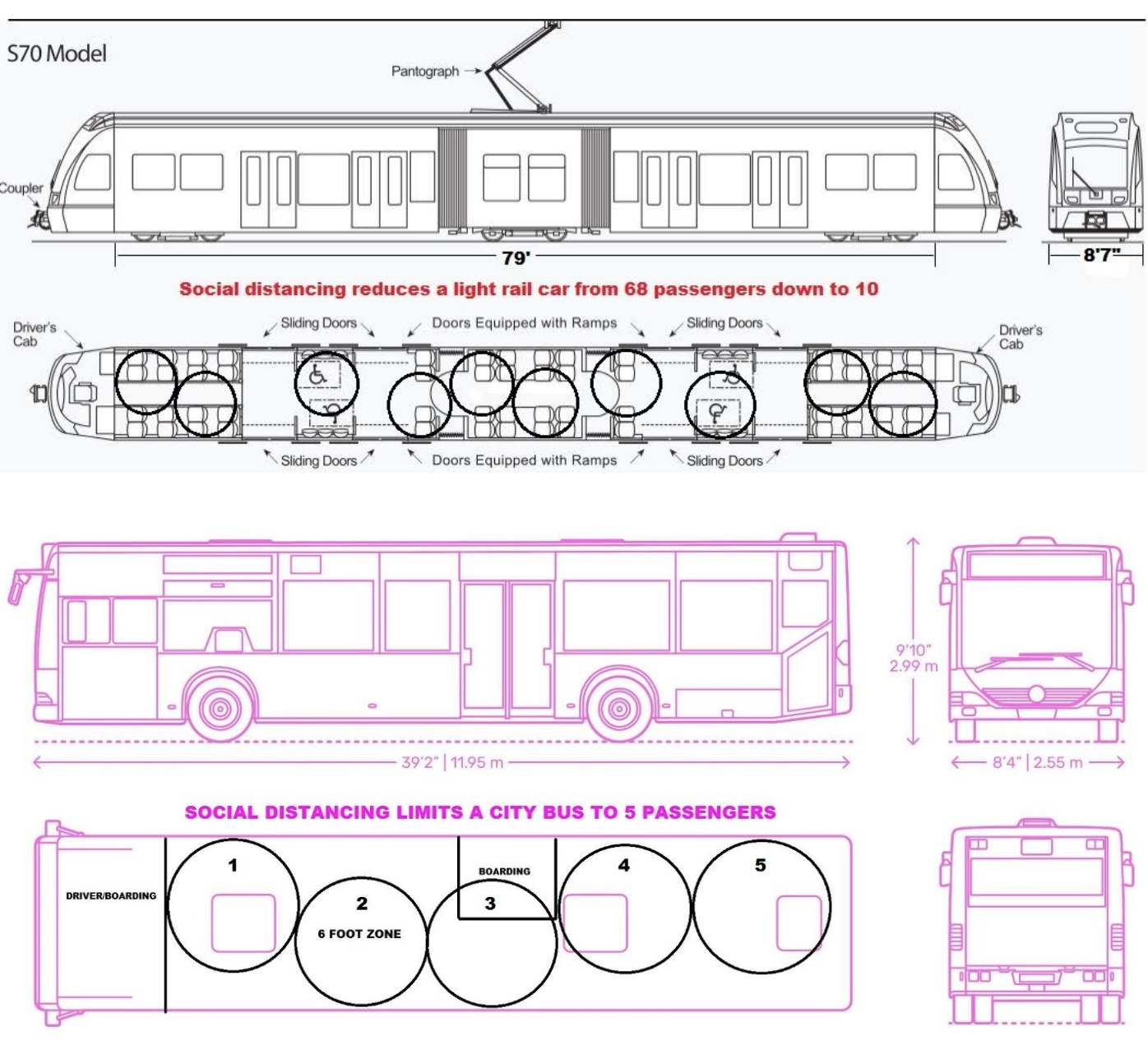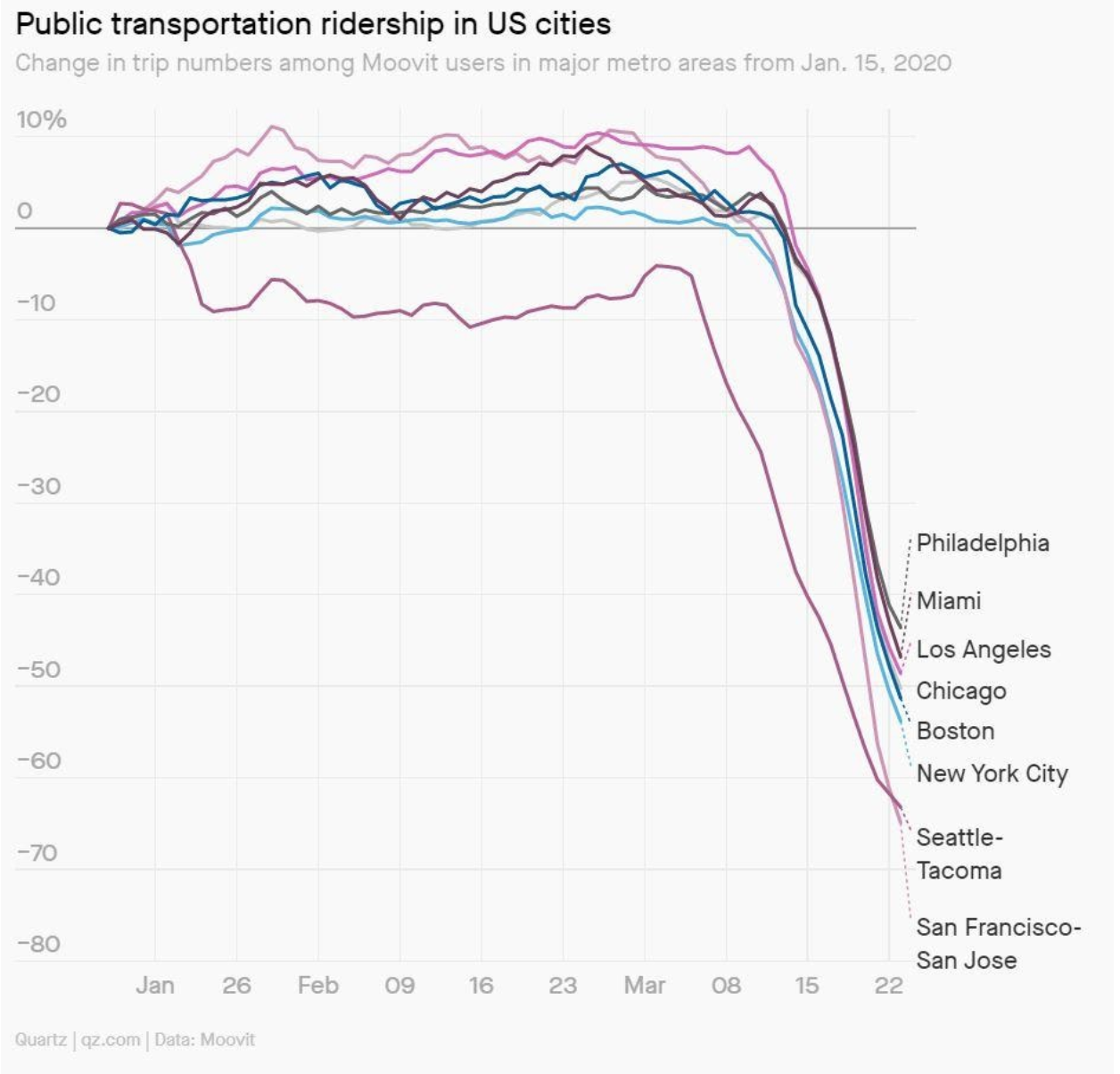
The current crisis with COVID-19 is certainly reason for pause in the traditional transit school of thought. This sudden collapse in transit ridership – albeit for very real public safety concerns – coincides with recent breakthroughs in transportation technologies, such as micromobility, vehicle-to-anything (V2X) infrastructure, and powerful machine learning that, together, could create a comprehensive transit package for a tech-forward city like Austin.
In addition to the technology considerations, wee must rethink these systems to better future-proof their inherent public safety hazard, knowing what we know now.
We’ve come to understand traditional mass transit systems put humans in frequent, close proximity – the antithesis of communicable disease mitigation and social distancing. Abundant studies demonstrate most public transit vehicles harbor pathogens. No cleaning is absolute; the first infected passenger undoes it all.
COVID 19 May be With us for a Long Time
Many experts predict the COVID virus is part of our lives going forward. A paper from the Yale School of Medicine states “COVID 19 can stay with us forever” https://medicine.yale.edu/news-article/24941/ Dr. Anthony Fauci states: “[a COVID vaccine] might not last forever and its effect will be finite“. He goes on to say: “We might need a boost to continue the protection, but right now we do not know how long it lasts…….the durability of immunity that’s protective ranges from three to six months to almost always less than a year” https://var/web/site/public_html.deseret.com/u-s-world/2020/7/8/21316087/coronavirus-covid-19-vaccine-booster CNBC reports in an interview with a noted virologist and former head of the CDC: “Even With a Vaccine, COVID is here to stay…… it might be with us forever” https://var/web/site/public_html.cnbc.com/2020/07/28/even-with-vaccine-we-will-be-dealing-with-this-forever-virus-experts.html
The bottom line is, we don’t know the future of COVID 19, a reality that makes investing huge sums into public transit a reckless endeavor. Perhaps even more disturbing, due to climate change and other factors, pandemics are increasing in frequency; what will the NEXT pandemic bring?
Solve Today’s Problems Today
THE LESSON OF NEW YORK
COVID-19 victims in New York City correlate to public transit and population density. In the early months of the outbreak, 44% of cases were in New York along with 44% of national public transit ridership. New Yorkers, many of whom don’t own a personal vehicle, are forced to accept health risk for mobility. No easy answer exists for a stranded, public transit-dependent population, other than to avoid creating the problem in the first place.
“They stand on station platforms and at bus stops, nervously waiting for rides in confined spaces with strangers — prime conditions for spreading the virus.They board thinking the virus could be lurking anywhere — on subway poles, bus seats or floating in the air around them from another passenger’s uncovered cough or sneeze.” – Washington Post
IS MASS TRANSIT COMPATIBLE WITH SOCIAL DISTANCING?
Most of the CapMetro vehicles do not have openable windows, limiting fresh air into the confined cars. The majority of filtration systems are ineffective against COVID19 and other microscopic pathogens.


MORE PANDEMICS COMING AT A HIGHER FREQUENCY
Four pandemics occurred in the 20th century (Spanish Flu, Asian Flu, Hong Kong Flu and HIV/AIDS) – roughly one every 25 years. Since 2002, we’ve had FIVE (SARS, Swine Flu, MERS, Ebola and COVID-19) – one every 4 years!
https://var/web/site/public_html.youtube.com/watch?v=JbXel06N6UM
Spanish Flu killed over 50 million people (675k in the U.S.); since that time, global population has grown over 400%. Medical experts warn that more lethal pandemics are coming, along with antibiotic resistant staph “superbugs”; it’s not a matter of “if,” but “when.” As risk increases, so must our defenses.
COVID19’s effects provide insight into the future of work-from-home, micro-mobility, renewable energy, and electrification. It also demonstrates public transit provides fertile ground for viral transmission. Moving forward, we must rethink our transportation strategies to accommodate for both rapid technological change and public safety considerations.
